If you’re a nature enthusiast, you likely enjoy the peaceful melody of birds chirping in your garden. Not only do these feathered friends bring a sense of tranquility, but they also play a crucial role in maintaining the ecological balance of our planet.
However, with urbanization and deforestation, bird habitats are diminishing, making it harder for them to find food and shelter. By creating a bird feeder, you can help attract birds to your garden and provide them with a reliable food source.
Key Takeaways
Things to consider:
Creating a bird feeder can be a great way to attract local birds to your yard, and it can also be a fun DIY project. Here are some important factors to consider when making a bird feeder:
- Type of Feeder: The type of feeder you choose to make will depend on what kind of birds you’re hoping to attract. For example, platform feeders attract a variety of birds, tube feeders are great for small birds like finches and chickadees, and suet feeders attract woodpeckers and nuthatches.
- Materials: The materials you use for your bird feeder should be sturdy and safe for birds. Wood, ceramic, metal, and certain types of plastic can all make good bird feeders. Avoid materials that can easily break or that could be harmful to birds.
- Food: Different bird species prefer different types of food. Research what the birds in your area prefer to eat and design your feeder to accommodate that food. Many birds like sunflower seeds, while others prefer suet, fruit, or nectar.
- Location: The feeder should be in a safe and quiet location where birds will feel comfortable eating. It should be out of reach of predators, but within sight of a window for your viewing pleasure. Also, consider the mess the feeding birds might make and position the feeder accordingly.

- Ease of Cleaning: Bird feeders need to be cleaned regularly to prevent the spread of disease, so make sure your feeder is easy to clean. You should be able to easily access all parts of the feeder to remove old food and wash it out.
- Weather Resistance: Consider your local climate when designing your bird feeder. If you live in a rainy area, make sure the feeder provides some shelter for the food to keep it dry. For cold climates, the feeder should be sturdy enough to withstand snow and ice.
- Perch Space: Depending on the bird species you wish to attract, you may need to provide ample space for perching. Some birds like to eat while perched, while others prefer to eat on the ground or while flying. The feeder design should cater to these specific needs.
- Squirrel Proofing: Squirrels are notorious for raiding bird feeders. If squirrels are common in your area, you may want to consider making a squirrel-proof bird feeder or using a baffle to prevent squirrels from reaching the feeder.
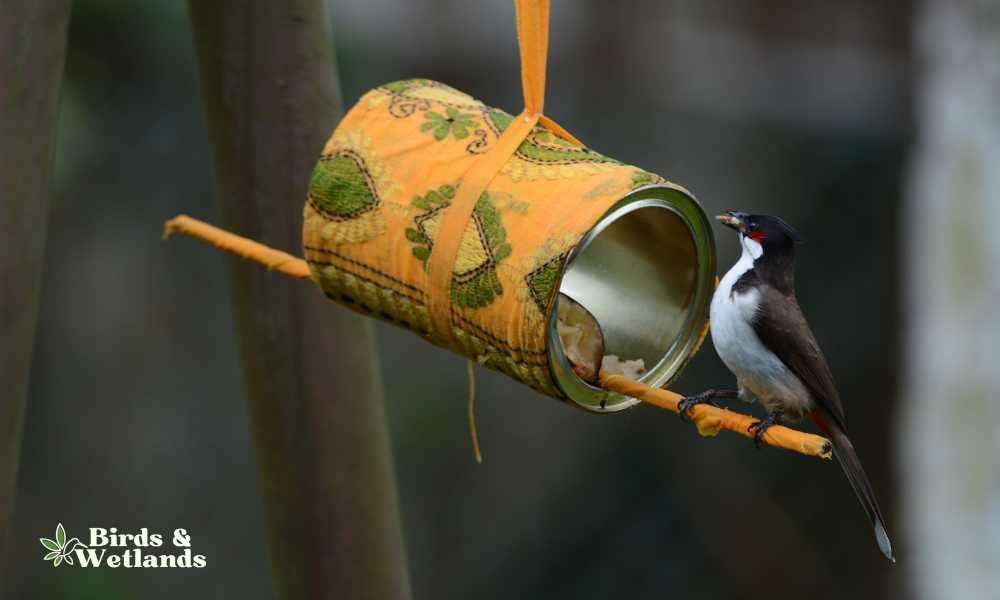
What are the advantages of making your own bird feeder?
Feeding birds can provide a sense of satisfaction and fulfillment as you contribute to their survival and well-being. It can also be a way to connect with nature and appreciate the beauty of birds up close. Additionally, observing and identifying different bird species can be a fun and educational experience.
You can always buy bird feeders from pet stores or online. But you can make things more interesting and fulfilling by doing your own bird feeder projects.
There are several advantages to making DIY bird feeders over buying commercial ones, including:
Cost-effective
DIY bird feeders can be a cost-effective alternative to buying one from a store. You can use materials that you may already have at home, such as a plastic bottle, milk carton, or even repurposed materials. Additionally, you can adjust the size and design of the feeder to fit your budget.
If you’re feeling charitable and generous, you gift one to a nursing home. Many nursing homes have a backyard with trees and inviting birds can add more life.
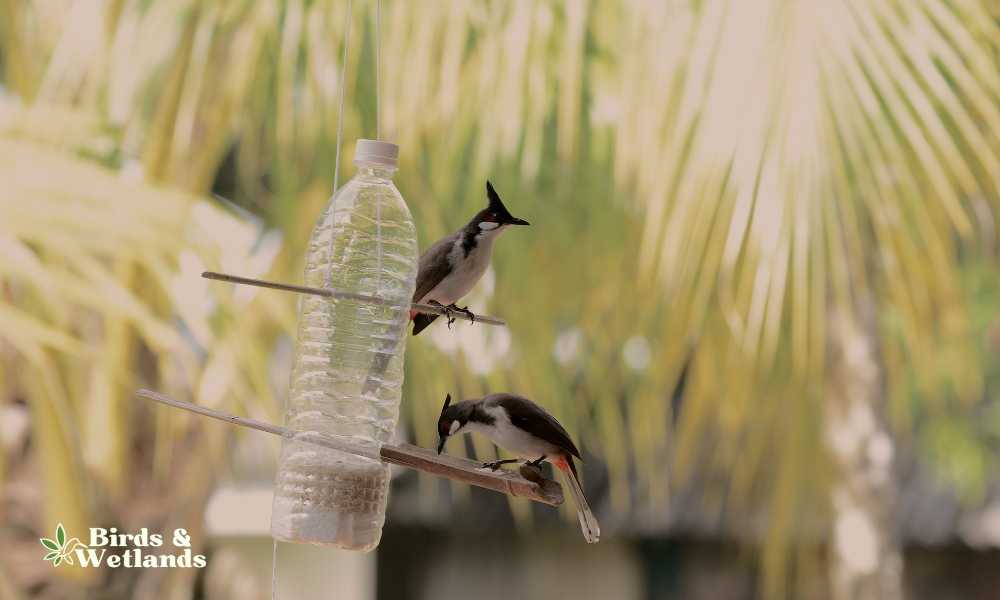
Personalization
Making your own bird feeders allows you to create a customized feeder that meets your specific needs. You can choose the type of food you want to offer, the size of the feeder, and the style that suits your aesthetic.
Educational
Homemade bird feeders can be a fun and educational project for families, schools, or anyone who wants to learn more about birds. If you are a crafty mom, you can let your children help so that they can learn about the types of birds that visit their feeders, their habitats, and their behaviors. Aside from being so much fun, kids doing their own creation can help them improve their fine motor skills.
Eco-friendly
DIY feeders can be an eco-friendly alternative to buying a new feeder. By using recycled materials such as plastic bottles, you are reducing waste and helping to protect the environment.
Creativity
A DIY bird feeder can be a creative and fun project that allows you to express your personality and creativity. You can use a variety of materials, shapes, and colors to create a unique and attractive feeder that will attract birds to your garden or yard.
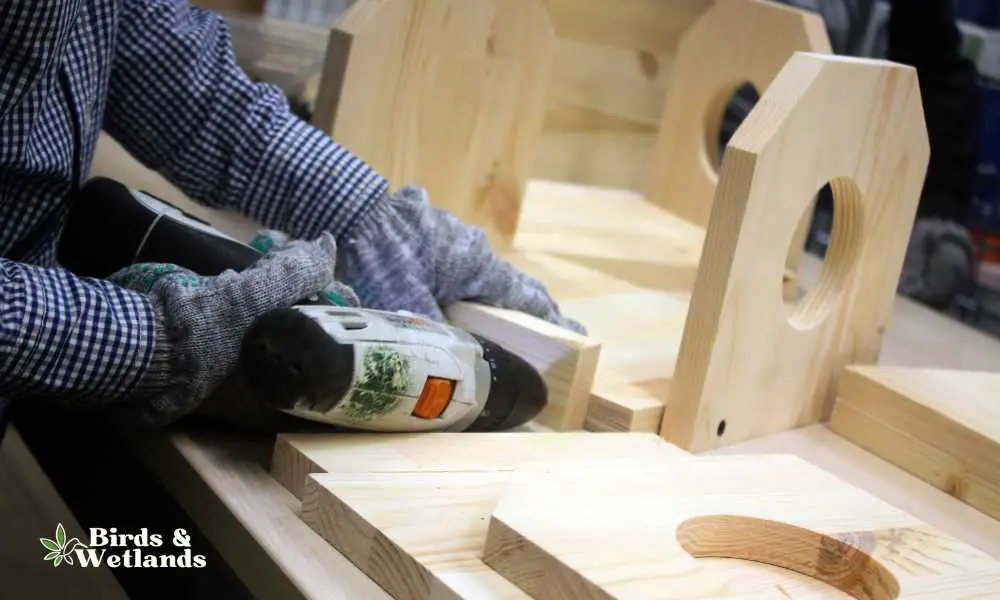
How to make a simple bird feeder using a plastic bottle
Making a DIY plastic bottle bird feeder is a fun way to attract birds to your yard or balcony, especially during winter months. Here’s how you can do it:
Supplies & Materials:
- An empty plastic bottle (such as a soda bottle or water bottle)
- A sharp knife or scissors
- A wooden dowel or stick, wooden spoons or a piece of unused wood
- String or twine
- Birdseed

Instructions:
- Begin by cleaning and drying your plastic bottle thoroughly.
- Using a sharp knife or scissors, cut a small hole near the bottom of the bottle. This will be the feeding hole for the birds.
- Cut another, larger hole on the opposite side of the bottle. This will be the refill hole for adding birdseed.
- Insert the wooden dowel or stick through the bottle, so it rests inside and pokes out on either side. This will provide perches for the birds to land on while they eat.
- Tie a length of string or twine around the neck of the bottle, and tie the other end to a tree branch or other suitable location.
- Fill the bottle with sunflower seed through the refill hole.
- Hang the bird feeder and wait for the birds to come!
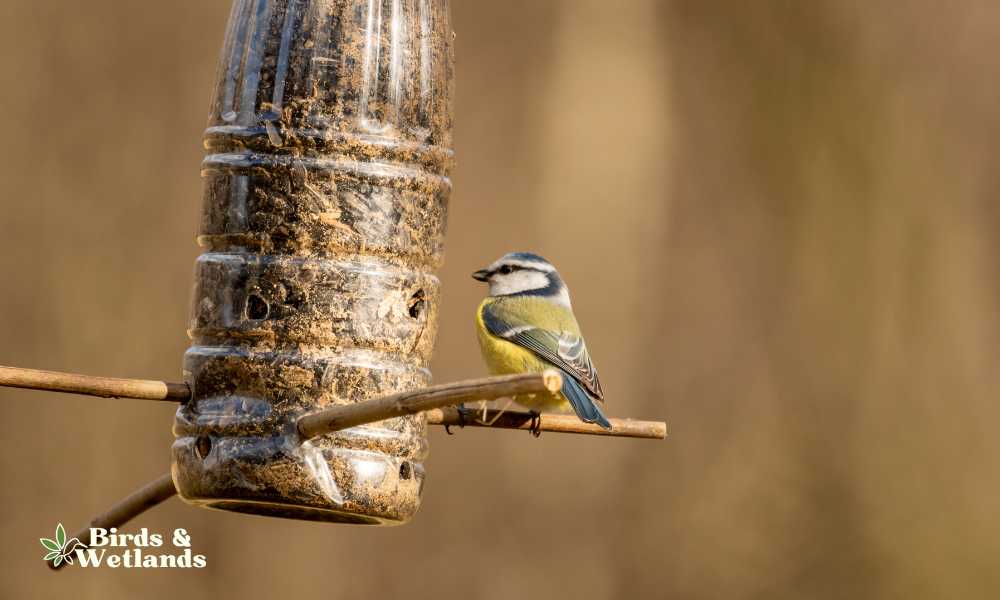
Remember to clean and refill the bird feeder regularly to keep it hygienic and attractive to insect-eating birds. Also, it’s important to place the feeder in a location that’s easily accessible to birds but out of reach of predators like cats.
Additional DIY Bird Feeder Ideas
Mason Jar
To make a DIY bird feeder with a clay pot or mason jar and cookie cutters, choose a clean and crack-free pot or jar, then tie a string or twine around the lip of the pot or jar. Spread peanut butter on the outside and mix some with birdseed.
Press the cookie cutter into the birdseed mixture and attach the shapes to the outside of the pot or jar. You can apply paint but make it is safe for birds. Hang the feeder outside in a place easily accessible to birds, and remember to clean and refill it regularly.
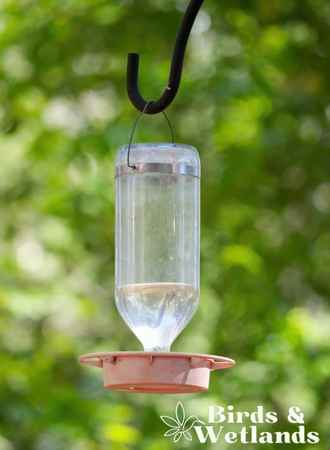
Teacup Bird Feeder
Use a vintage teacup and saucer that you can buy from a dollar store to create a charming birdseed feeder. Glue the cup to the saucer, then drill a small hole in the bottom. Wrap twine around the center hole. Fill the cup with birdseed, and your feathered friends will have a stylish place to dine.
Orange Peel Bird Feeder
Cut an orange in half and scoop out the flesh. Pierce four small holes near the top and four near the bottom of each half, then thread twine through the holes to create a hanger. Fill the orange halves with bird seed and hang them up for the jays, wrens and other birds to enjoy.

Cardboard Bird Feeder
Tie a length of twine around the top of a cardboard tube, leaving a loop for hanging. Cut two holes on opposite sides and insert wooden spoons to serve as perches. Spread peanut butter all over the tube, then roll it in birdseed. Hang it up outside and watch the birds come to feast.

Plate Bird Feeder
Use a large plate as a base and attach a metal bowl to the center of the plate using adhesive. You can cut them into the a bird house shape. Drill a small hole through the center of the bowl, then insert a screw eye and attach a chain for hanging. Use a wicker paper plate holder to add a nice touch. Alternatively, you can repurpose a wooden tray instead of a plate.
Terra Cotta Flower Pot Bird Feeder
Turn a terra cotta pot upside down and glue a saucer to the bottom of the pot. Soak the pot in water overnight, drill a small hole in the center of the saucer, then insert a screw eye and attach a chain for hanging.
Milk Carton Bird Feeder
Cut an empty milk carton in half and use the top half as a feeder. Cut a small hole in the side of the carton and attach a wooden dowel for birds to perch on. Fill the bottom of the carton with birdseed or suet and hang it up outside.
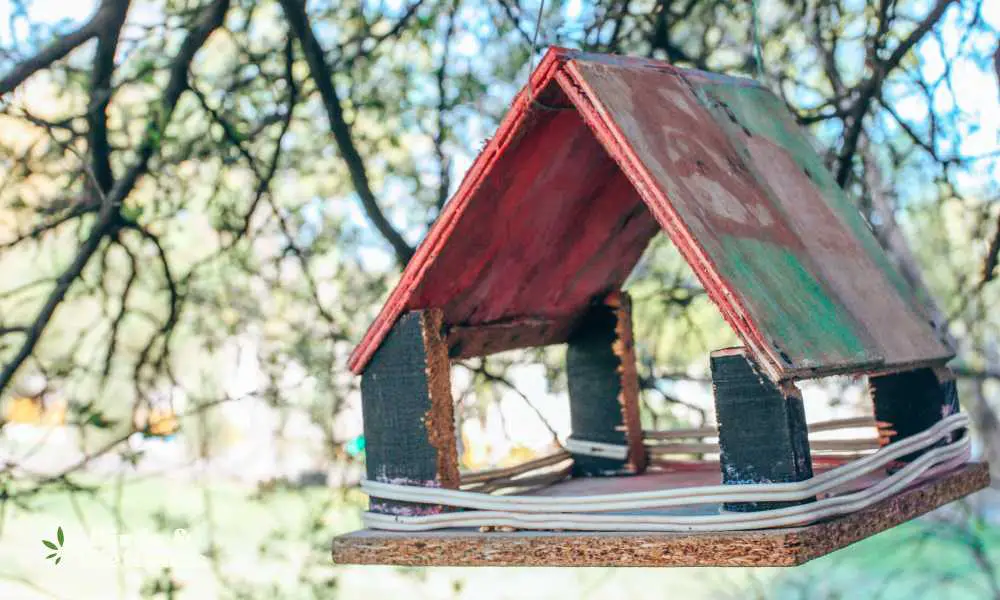
Wine Bottle
Place the bottle in a wooden frame with a flat base, and fill it with birdseed. The seed will be dispensed by gravity as the birds eat, keeping the feeder continuously filled. This type of feeder is ideal for use on an open porch or deck.
Lego Bird Feeder
To make a bird feeder out of Legos, start by building a structure around a plastic container with a hole in the bottom for the birdseed to come out. Attach the Lego structure to the container and create a perch for the birds to stand on while they eat.
Next, drill or poke a hole through the center of the container lid and insert a wooden dowel or stick, making sure it is securely fastened. Tie a string or twine around the dowel or stick, and hang the feeder in a tree or other high location.
Finally, fill the container with birdseed and enjoy watching the birds come to feed! Remember to clean the feeder regularly to prevent the spread of disease among the birds.



